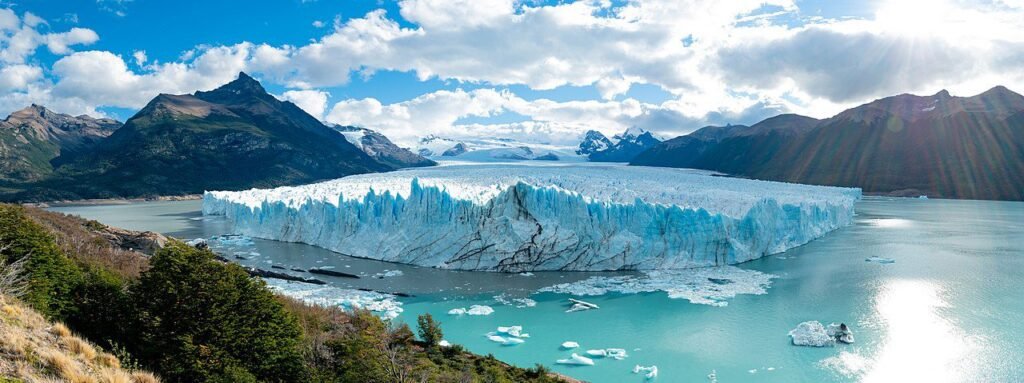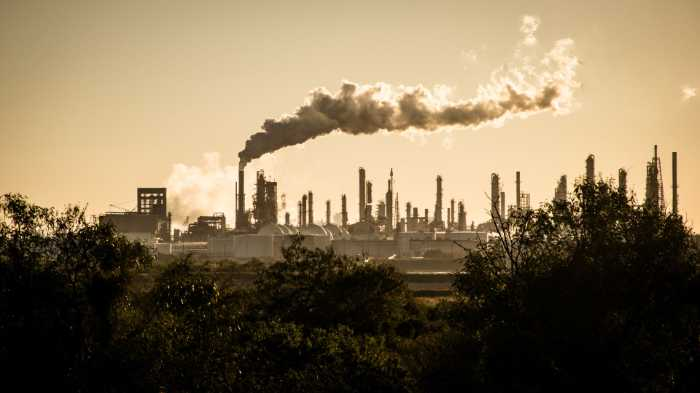
Climate change is a hot topic these days. It seems like every day there is a news story about the devastating effects of climate change. But how did we get here? This blog post will explore 10 fascinating facts about climate change history. We will look at how human activity has impacted the environment over the years and what we can do to prevent further damage. Stay tuned for some interesting information!
Climate change isn’t just a modern problem – its history goes back much further than most people realize. Here are ten fascinating facts about the history of climate change:
- The first recorded instance of climate change was in 460 BCE when Herodotus wrote about how unusual weather had caused the Nile to flood unusually early.
- The Roman Emperor Claudius reportedly died of a fever in 53 CE after a period of abnormally hot weather.
- A prolonged drought in Syria is thought to have contributed to the fall of the Akkadian Empire in the 23rd century BCE.
- The Mayan civilization is thought to have collapsed at least partially due to drought and climate change.
- The Little Ice Age, a period of cooler temperatures that began in the 14th century, caused widespread famines and may have helped trigger the French Revolution.
- In 1816, Mount Tambora erupted in Indonesia, causing what became known as “the Year Without a Summer.”
- Climate change is thought to have contributed to the Dust Bowl of the 1930s.
- Unusually warm weather in Europe in the summer of 2003 led to heat waves that killed an estimated 70,000 people.
- The melting of Arctic ice is causing problems for polar bears, walruses, and other animals that depend on sea ice for their habitat.
- Climate Scientists predict that abrupt climate change will cause more extreme weather events, like hurricanes, in the future.
As you can see, climate change is nothing new; it’s been happening for centuries. And unfortunately, it looks like things are only going to get worse in the future. We need to do everything we can to reduce our impact on the environment and stop climate change before it’s too late.
- The history of climate change
- The industrial revolution
- The history of the industrial revolution
- What are the four types of industrial revolutions?
- 1. Coal
- 2. Gas
- 3. Electricity and nuclear
- 4. Internet and renewable energy sources
- Human activity
- 1. Burning fossil fuels
- 2. Deforestation
- 3. Large-scale agriculture
- 4. Livestock farming
- Natural phenomena
- What are the impacts of climate change over time?
- 1. Glaciers began to melt
- 2. Extreme weather conditions
- 3. Impact on human health
- 4. Impact on agriculture
- What can we do to prevent further damage from climate change?
- 1. Reduce our emissions of greenhouse gases
- 2. Reduce carbon dioxide
- 3. Support renewable energy sources
- 4. Reuse, and recycle
- 5. Educate yourself and others about climate change
- Conclusion
- FAQs
The history of climate change
The history of climate change is fascinating. For centuries, people have been trying to understand the changing climate. Early scientists believed that the Earth’s climate was controlled by the sun. They thought that changes in the sun’s heat could impact the Earth’s climate. However, we now know that the sun is not responsible for climate change. Instead, it is human activity that is responsible for the changing climate.
Over the years, there have been many theories about what causes climate change. Some scientists believe that it is caused by a natural cycle of the Earth’s orbit around the sun. Others believe that greenhouse gases (GHG) are to blame. GHG are gases that trap heat in the atmosphere. They are released when we burn fossil fuels, like coal and oil.
So how did we get to where we are today? Let’s take a look at the causes of climate change.
The industrial revolution
The Industrial Revolution began in the late 1700s. This was a time when factories began to pop up all over Europe and North America. At first, the industrial revolution was a good thing. It brought new jobs and new technologies. But it also had a dark side.
The Industrial Revolution led to an increase in greenhouse gases. This is because factories began burning coal and oil to power their machines. The burning of fossil fuels releases greenhouse gases into the atmosphere. These gases trap heat in the Earth’s atmosphere, causing the Earth’s temperature to rise.
As the industrial revolution continued, more and more GHGs were released into the atmosphere. This led to a gradual increase in the Earth’s temperature. Over time, this temperature increase began to cause problems.
The history of the industrial revolution

The First Industrial Revolution began in the late 18th century when advances in technology and engineering led to the widespread use of steam power. This new form of energy allowed factories and mills to operate on a much larger scale and led to the development of new machines such as the spinning jenny and the steam engine. Over the course of the 19th century, these technologies spread throughout Europe and North America, transforming traditional agriculture-based economies into industrialized societies.
The Second Industrial Revolution took place in the late 19th and early 20th centuries as electricity powered a new wave of technological innovation. This period saw the mass production of goods, the rise of the assembly line, and the advent of new communication technologies such as the telephone and radio.
The Third Industrial Revolution began in the mid-20th century with the development of computers and other digital technologies. This Information Age has been characterized by rapid economic growth, global trade, and the spread of information and knowledge. Today, we are on the brink of a Fourth Industrial Revolution, as advances in artificial intelligence, robotics, and biotechnology are reshaping our world.
What are the four types of industrial revolutions?
The phrase “industrial revolution” typically conjures up images of smokestacks and assembly lines. However, the term actually refers to a period of dramatic technological change that has occurred in several distinct waves.
1. Coal
The first industrial revolution was powered by coal. This period saw a shift from manual labor to machine-based production, as well as an increase in international trade.
2. Gas
The second industrial revolution was characterized by the introduction of gas and new chemical processes. This era saw a further increase in factory production, as well as the rise of consumer culture.
3. Electricity and nuclear
The third industrial revolution began with the development of nuclear power and electronics. This period saw a decrease in manual labor, as well as an increase in computer-based automation.
4. Internet and renewable energy sources
The fourth industrial revolution is currently underway, marked by the rise of the internet and renewable energy sources. This new wave of change is transforming traditional industries and creating entirely new ones. Whether efficiency or creativity will be its most defining characteristic remains to be seen.
You can’t improve what you don’t measure.
Free Verified Carbon Calculators.
Erase Your Carbon Footprint in less than 5 Minutes
Personal Carbon Footprint Calculator
Business Carbon Footprint Calculator
Human activity
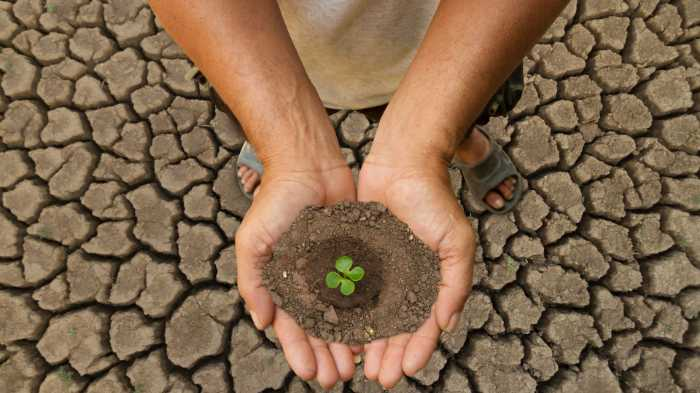
Climate change is caused by an array of human activities including, but not limited to:
1. Burning fossil fuels
Burning fossil fuels such as natural gas, oil, and coal releases what are called greenhouse gases into Earth’s atmosphere. There, these gases trap heat from the sun’s rays inside the atmosphere resulting in a global temperature rise.
2. Deforestation
Deforestation also contributes to climate change. Trees absorb carbon dioxide – a harmful greenhouse gas – from the atmosphere. When we cut down trees, we release this stored carbon dioxide back into the air.
3. Large-scale agriculture
Large-scale agriculture can also lead to climate change. The way we grow and raise crops has changed a lot over the past few hundred years. Today, farmers use heavy machinery that burns fossil fuels, and they often clear large areas of land to make room for crops which can add more GHG to the atmosphere.
4. Livestock farming
Additionally, livestock farming produces methane gas – another harmful greenhouse gas – which is released into the air when animals belch or defecate.
In sum, there are many ways in which human activity contributes to climate change. Though it may seem like a daunting problem, there are things we can do to help slow down and even reverse climate change.
Natural phenomena
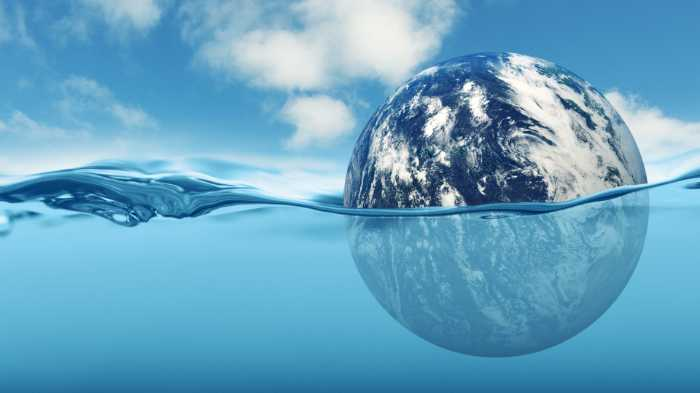
Other causes of climate change include natural phenomena such as volcanic eruptions, changes in the Earth’s orbit, and fluctuations in the sun’s output.
While greenhouse gases like carbon dioxide and methane receive the most attention when it comes to climate change, it’s important to remember that there are other factors at play as well. For example, changes in Earth’s orbit can impact the amount of sunlight that our planet receives.
Additionally, volcanic eruptions can release large amounts of ash and particulates into the atmosphere, which can reflect sunlight and cause cooling. Moreover, fluctuations in the sun’s output can also affect climate patterns and global warming. While natural phenomena are not the only cause of climate change, they play a significant role in shaping our planet’s changing climate.
What are the impacts of climate change over time?
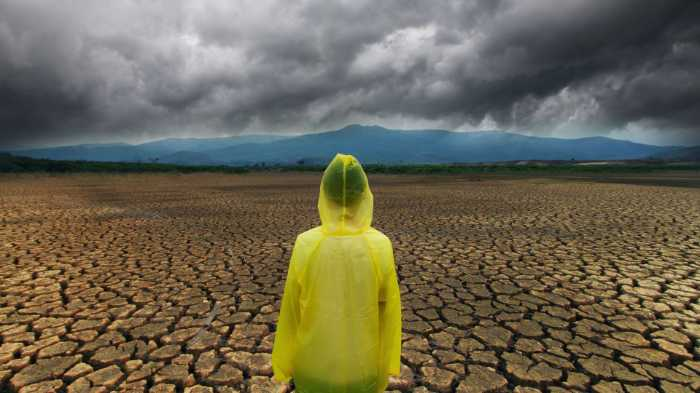
The Earth’s climate is changing. This is evident from increasing global temperatures resulting in melting glaciers, rising global sea levels, extreme weather conditions, and more. These changes are resulting in large impacts on human health, agriculture, wildlife, and many other areas. Let’s look at the impact of climate change over time:
1. Glaciers began to melt
When climate change began, one of the first effects was the melting of glaciers. Glaciers are large masses of ice that cover mountains and other landforms. They are found in cold regions, like Antarctica and Greenland.
As the Earth’s temperature increased, glaciers began to melt. This caused a sea-level rise. The rise in sea levels led to flooding in coastal areas. It also created problems for the animals that live on glaciers, like penguins and seals.
The effects of climate change are becoming more and more evident. We can see the effects of climate change all around us. The melting of glaciers is just one example. Climate change is a problem that we must address now before it’s too late.
2. Extreme weather conditions
Climate change has been linked to an increase in the frequency and severity of extreme weather conditions around the globe. In the past, extreme weather events were typically caused by large-scale phenomena like El Niño or La Niña. However, climate change has begun to influence these conditions, making them more intense and erratic.
As a result, we see more hurricanes, floods, and heatwaves. Moreover, climate change is also making it difficult to predict when and where these events will occur. This is a serious problem because it makes it difficult for people to prepare for and respond to extreme weather events. The impacts of climate change are far-reaching and damaging, and they are only expected to become more severe in the years to come.
3. Impact on human health
Climate change is already having an impact on human health, and the effects are expected to become more widespread and more severe over time. Extreme weather events, such as heatwaves and floods, can lead to illness, injury, and even death. In addition, climate change is expected to cause an increase in air pollution and the spread of infectious diseases. As global temperatures rise and weather patterns change, people will be exposed to new health risks.
Children, the elderly, and those with chronic health conditions are especially vulnerable. Adaptions will need to be made to protect people from the harmful effects of climate change. Prevention strategies will need to be put into place to reduce the chances of illness and injury. And public health infrastructure will need to be strengthened to deal with the increased demand for services. Climate change is a serious threat to human health, and we must take action now to protect ourselves from its dangers.
4. Impact on agriculture
Climate change has had a profound impact on agriculture since it began. The increased frequency and severity of extreme weather events have destroyed crops, ruined farmland, and killed livestock. Droughts have become more common, making it difficult for farmers to irrigate their fields. Floods have also become more common, causing crop damage and perfect breeding grounds for disease-carrying pests.
As a result of these changes, agricultural production has declined in many areas of the world. In addition, the price of food has risen sharply, making it difficult for people to afford nutritious meals. Climate change is thus having a profound impact on agriculture and food security. Unless action is taken to mitigate the effects of climate change, these impacts are only likely to become more severe in the future.
What can we do to prevent further damage from climate change?
Climate change is a reality that is happening right now. It is happening faster than scientists had predicted, and it is causing drastic changes to our planet. There are steps we can take to prevent further damage:
1. Reduce our emissions of greenhouse gases
The most important thing we can do to prevent further damage is to reduce our greenhouse gas emissions. We can do this by making changes in our daily lives, such as using public transportation, using energy-efficient appliances, and eating less meat. We can also make a difference by supporting businesses that are working to reduce their emissions.
2. Reduce carbon dioxide
Another important step we can take to prevent further damage from climate change is to reduce carbon dioxide emissions. This gas is produced by burning fossil fuels such as coal, oil, and natural gas. It is also released when we clear land for farming or development.
Atmospheric Carbon dioxide traps heat which disturbs the climate, resulting in more extreme weather conditions and the global sea-level rise. To reduce our carbon dioxide emissions, we should stop burning fossil fuels and misusing natural resources. By making these changes, we can help to slow down climate change and protect our planet for future generations.
3. Support renewable energy sources
Additionally, we need to support renewable energy sources such as solar and wind power. The sun is a never-ending source of energy that can be harnessed to power our homes and businesses. Solar panels convert sunlight into electricity, and solar thermal systems use the sun’s heat to generate hot water or steam.
Wind turbines use the wind to generate electricity, while hydroelectric dams harness the power of moving water to create renewable energy. Geothermal systems tap into the Earth’s internal heat to generate electricity or heat buildings. Supporting renewable energy sources is essential to preventing further damage from global climate change.
4. Reuse, and recycle
One way to prevent further damage to the environment is to reuse and recycle materials whenever possible. This reduces the amount of waste that ends up in landfills, and it also helps to conserve resources. Reusing materials can be as simple as recycling paper and plastic, or it can involve more creative endeavors such as upcycling or repurposing.
By finding new ways to use old things, we can help to reduce our impact on the environment. In addition, recycling helps to Close the loop by turning waste into new products. This process conserves energy and reduces pollution, making it an important part of protecting our planet.
5. Educate yourself and others about climate change
One of the most important things individuals can do to help prevent further damage from climate change is to educate themselves and others about the issue. Climate change is a complex problem that requires a deep understanding in order to develop effective solutions.
By learning about the causes and effects of global climate change, individuals can be better equipped to take action to reduce their own impact on the environment. In addition, educating others about global climate change can help to create a groundswell of support for policies and initiatives that will help to mitigate the problem.
When it comes to climate change, knowledge truly is power. By taking the time to learn about this issue, individuals can play a vital role on a global scale in protecting our planet for future generations.
Conclusion
Climate change is a complex and serious issue that requires our attention now more than ever. By learning about climate change and its effects on the environment, we can work together to find solutions that will help to mitigate the problem. In addition, supporting businesses and initiatives that are working to reduce greenhouse gas emissions is essential to slow down the rate of climate change.
FAQs

What is the greenhouse effect?
The greenhouse effect is a process by which thermal radiation from a planet’s surface is absorbed by atmospheric greenhouse gases and is re-radiated in all directions. This process warms the planet’s lower atmosphere and surface. The main greenhouse gases in Earth’s atmosphere are water vapor, carbon dioxide, methane, nitrous oxide, and ozone. Greenhouse gas cuts are necessary to mitigate the dangerous effects of global warming. The natural greenhouse effect is vital to life on Earth, but the enhanced greenhouse effect due to human activity is causing problems for the planet. Reducing emissions of GHG is essential to slow down global warming and protect our planet.
What is the biggest source of global warming?
The biggest source of global warming is the sun. The sun’s energy heats the Earth’s surface, and the Earth’s atmosphere traps some of that heat. This trapped heat makes the Earth’s atmosphere warm, and this warm atmosphere then causes the Earth’s climate to change. The Earth has been through many periods of global warming and global cooling, and the current period of global warming is thought to be caused by GHGs like carbon dioxide and methane. These gases trap more heat than other gases, and they are released into the atmosphere when we burn fossil fuels like coal and oil. The Intergovernmental Panel on Climate Change (IPCC) is a group of scientists who study climate change, and they say that it is “extremely likely” that human activity is the main cause of global warming.
What is climate science?
Climate science is the study of the Earth’s climate system. This includes both the natural processes that shape the climate as well as the human activities that impact it. Climate change science investigates how the Earth’s climate has changed in the past and how it is likely to change in the future. This research forms the basis for the Paris Climate Accord, which is a global agreement to limit future climate change. The Intergovernmental Panel on Climate Change (IPCC) is the leading scientific body that assesses the evidence for climate change.
What is global warming theory?
The global warming theory posits that the Earth’s climate system is sensitive to small changes in the planet’s average surface temperature. These changes can cause the Earth to enter into an ice age or warm period, depending on the amount of heat that is absorbed or radiated back into space. The theory suggests that human activities, like burning fossil fuels and clearing forests are causing an increase in the Earth’s average surface temperature.
What is carbon dioxide theory?
The carbon dioxide theory posits that more carbon dioxide in the atmosphere leads to higher levels of atmospheric carbon dioxide, which in turn leads to a discernible human influence on the world’s climate. The theory is also backed by a large-scale geophysical experiment conducted by the World Meteorological Organization and the National Science Foundation. The experiment found that the aerospace of fossil fuels and deforestation led to an increase in atmospheric carbon dioxide levels.

Dean Emerick is a curator on sustainability issues with ESG The Report, an online resource for SMEs and Investment professionals focusing on ESG principles. Their primary goal is to help middle-market companies automate Impact Reporting with ESG Software. Leveraging the power of AI, machine learning, and AWS to transition to a sustainable business model. Serving clients in the United States, Canada, UK, Europe, and the global community. If you want to get started, don’t forget to Get the Checklist! ✅
